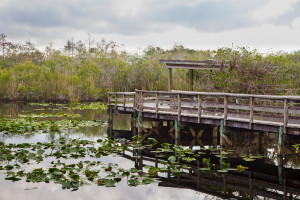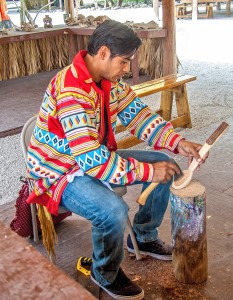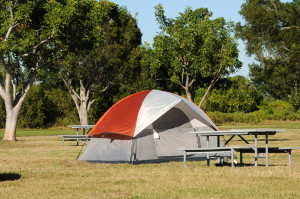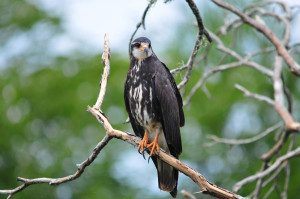 The Everglades is a vast wilderness. If you want to plan a trip to this beautiful wetland, there is a lot you can possibly see and do. Even if you’ve been to the Park before, you can always come back and find new places to explore and experiences to partake in. Below, we’ve shared some tips on some things to do in the Everglades Park that are worth visiting.
The Everglades is a vast wilderness. If you want to plan a trip to this beautiful wetland, there is a lot you can possibly see and do. Even if you’ve been to the Park before, you can always come back and find new places to explore and experiences to partake in. Below, we’ve shared some tips on some things to do in the Everglades Park that are worth visiting.
- If you’re looking to see some wildlife, the Shark Valley or Homestead entrances of the park is where you should enter.
- If you have a lot of time, exploring the Ten Thousand Islands off the Gulf Coast, followed by a boat trip to the Everglades City entrance to the park is a great, breathtaking outing.
- Visit the Ernest F. Coe Visitor Center; the Center has a lot of great interactive exhibits and a 15-minute film, “River of Life” in the theater. You can also pick up maps here and have any questions you have answered. If you’d like to schedule a ranger-guided tour, you can do it here; these tours are great for first-time visitors.
- The Anhinga Trail is a must-go-to place if you want to see alligators and wading birds at close range. This is a 3/4 mile paved, boardwalk trail.
- The Pahayokee Overlook has an observation tower for people to view the vastness of the Everglades; it’s a great spot to catch the sunset.
- Flamingo – If you plan to spend a lot of time in the Park or really love the outdoors, this is the area to go. It’s a long drive (38 miles from the Park’s entrance). This area is great for camping and birdwatching.
- Coot Bay/Mud Lake is a great spot to canoe or kayak through mangrove tunnels and lakes; people can see lots of birds, alligators and crocodiles going this route.
Getting Around the Everglades
Along with all the great activities and places-to-see above, another great way to experience the Everglades up-close-and-personal is a ride on an airboat. Airboats are iconic in the Everglades. With an airboat tour, you can see wildlife and areas of the wetland that are inaccessible by foot. There are so many things to do in the Everglades! To book an airboat tour, contact Captain Mitch’s Airboat Tours at 800-368-0065 or click here.
 Did you know a Native American tribe resides still in the Everglades? There is, and they are called the Miccosukee Tribe of Indians of Florida. They occupy several reservations in Florida, known as the Miccosukee Indian Reservation The largest section of this reservation is 333 acres of the north border of the Everglades National Park; in fact, the tribe controls around 200,000 acres of wetland; this land must be used for “the purpose of hunting, fishing, frogging, and subsistence agriculture to carry on the traditional Miccosukee way of life.”
Did you know a Native American tribe resides still in the Everglades? There is, and they are called the Miccosukee Tribe of Indians of Florida. They occupy several reservations in Florida, known as the Miccosukee Indian Reservation The largest section of this reservation is 333 acres of the north border of the Everglades National Park; in fact, the tribe controls around 200,000 acres of wetland; this land must be used for “the purpose of hunting, fishing, frogging, and subsistence agriculture to carry on the traditional Miccosukee way of life.” Camping is one of the best ways to experience the great outdoors. But, did you know you can actually go camping in the Everglades National Park? You can! The park offers camping opportunities in both the front country and back country. Visitors are able to go camping year-round, but the wet season (June through November) is a more difficult and uncomfortable environment for camping. If you’re thinking about experiencing this beautiful wetland through a camping experience, remember to come prepared; the park does not provide any camping equipment for people to buy or rent.
Camping is one of the best ways to experience the great outdoors. But, did you know you can actually go camping in the Everglades National Park? You can! The park offers camping opportunities in both the front country and back country. Visitors are able to go camping year-round, but the wet season (June through November) is a more difficult and uncomfortable environment for camping. If you’re thinking about experiencing this beautiful wetland through a camping experience, remember to come prepared; the park does not provide any camping equipment for people to buy or rent. Avid birdwatcher? Well, the Everglades is a great place to go bird watching; you’ll see a variety of birds. The Park provides the perfect setting with plenty of spots where birds roost, nest, eat, or fly by. In fact, the Park is one of the top 10 birding locations in the world; park goers have the chance to see both resident coastal and wading birds in a number of different species. There are more than 350 species of birds in the Everglades for a person to catch a glimpse of! Come prepared with a set of binoculars to spot as many as you can!
Avid birdwatcher? Well, the Everglades is a great place to go bird watching; you’ll see a variety of birds. The Park provides the perfect setting with plenty of spots where birds roost, nest, eat, or fly by. In fact, the Park is one of the top 10 birding locations in the world; park goers have the chance to see both resident coastal and wading birds in a number of different species. There are more than 350 species of birds in the Everglades for a person to catch a glimpse of! Come prepared with a set of binoculars to spot as many as you can!





